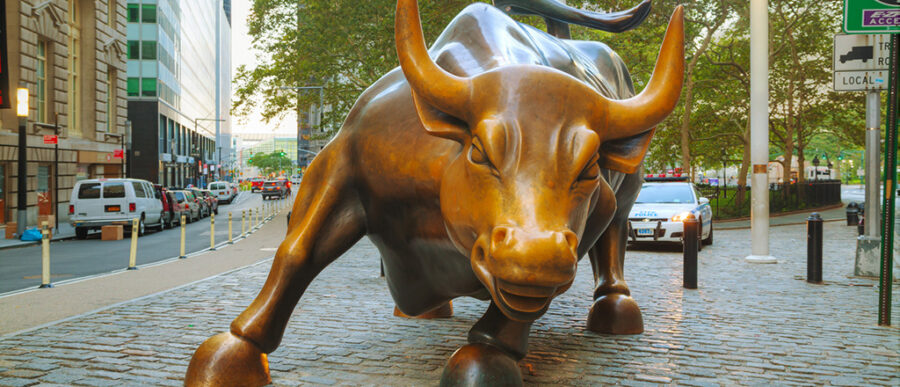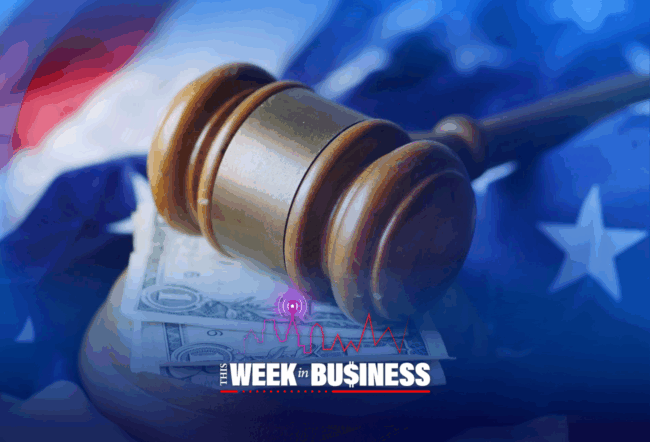SPACs, or special purpose acquisition companies, have raised more than $100 billion so far this year compared to $83 billion last year and more than all that they have raised in their 30-year history, a recent Wall Street Journal report noted.
SPACs have been one of the “most spectacular” developments in financial markets in recent years, according to Wharton finance professor Joao Gomes. He moderated a recent Wharton Executive Education virtual event titled “Understanding SPACs,” where Wharton finance professors Nikolai Roussanov and Itamar Drechsler explained how SPACs work and their pros and cons for investors. “These so-called ‘blank-check companies’ proved a hit with investors and many young private companies wishing to go public as well as several top celebrities,” Gomes added.
How Does a SPAC Work?
SPACs are entities with no commercial operations of their own and are created by investors — called sponsors — to buy operating companies they consider promising. In recent years, SPACs have been active in the sectors of electric vehicles, green technology, consumer-oriented technology, communications, and retail, Drechsler noted.
A SPAC is a publicly listed shell company that is created to merge with a private operating company. The merger creates a single entity that will trade publicly and thus give a public listing for the private operating company. When SPACs raise their initial capital, they are not required to identify the operating companies they plan to buy; the SPAC’s selling proposition is based on the reputation of its sponsors, Drechsler pointed out.
From the time a SPAC lists and raises money through an IPO, it has 18 to 24 months to find a private operating company to merge with. If a SPAC can’t find an acquisition target in the given time, it liquidates and returns the IPO proceeds to investors, who could be private equity funds or the general public. SPACs usually find those target companies, Drechsler noted.
Investors in the IPO of a SPAC typically buy what are called units for $10 each. The unit consists of a common share, which is regular stock, and a derivative called a warrant. Warrants are call options and they allow investors to buy additional shares at specified “exercise” prices. After the merger with the shell company, both the shares and the warrants are listed and traded publicly.
“These so-called ‘blank-check companies’ proved a hit with investors and many young, private companies wishing to go public….” –Joao Gomes
If some SPAC investors change their minds and do not want to participate in the merger with the shell company, they could redeem their shares and get back the $10 they paid for each. However, they can retain the warrants.
To increase the amount of cash available for the operating company that’s being taken public, it is common for SPAC sponsors to bring in institutional investors to buy additional shares, Drechsler said. These are called PIPEs, or “private investment in public equity,” which typically are large mutual funds, pension funds, and sovereign wealth funds.
SPACs vs IPOs: Which Is a Better Route?
For private companies, a merger with a SPAC is seen as a better route to go public than undertaking their own IPOs. Roussanov explained the main advantages and disadvantages of the SPAC route to go public.
“The public equity markets democratize access to capital for entrepreneurs and also democratize access to investment opportunities for investors,” said Roussanov. “Over the last couple of decades, we have seen a dramatic decline in the number of publicly-listed and publicly-traded companies in the U.S. from the peak of about 8,000 in the late 1990s that coincided with the Nasdaq tech boom to about half of that, if not less, in the early to mid-2000s and 2000 teens.”
The growth of private equity perhaps contributed to that the decline in the number of publicly listed companies, Roussanov said. “There is also a sense that going public has become costlier for firms, both in terms of the monetary cost that the company founders bear and in terms of the time it takes to go public.” Companies go public at later stages of their life, perhaps because they must prove their feasibility in the marketplace, he noted.
At the same time, there seems to be pent-up demand for capital from “small and young firms with maybe great new innovative ideas,” Roussanov said. They probably find it harder to raise money through additional stages of say, venture capital, but they are not yet ready for the IPO process, he added. “For a young, capital-hungry, but pre-revenue firm, the IPO route is not usually available.”
The SPAC route is the only viable way for those firms to both raise capital and acquire a public listing in a fairly short period of time, according to Roussanov. The speed of completion of a SPAC deal is dramatically shorter than the usual IPO process that involves road shows and a book-building process, he added.
The long lead time for an IPO may mean that a firm may miss market windows where potential investors are flush with cash and looking for opportunities, said Drechsler. “Instead, if you find a SPAC that will merge with you, that can happen in a couple of months.”
The SPAC model has become popular because “in some ways it is fulfilling a need” for both firms going public and investors,” Roussanov continued. “There has been a pent-up demand from investors, in particular retail investors who have been excluded from participation in the early stage of the life cycle of many of these innovative firms that turned out to be huge successes.” He pointed out that much of the promise in a startup is realized in its early stages.
“There has been a pent-up demand from investors … who have been excluded from participation in the early stage of the life cycle of many of these innovative firms that turned out to be huge successes.” –Nikolai Roussanov
For companies early in their life cycle, another disadvantage with IPOs is that they are not legally allowed to make projections or forward-looking statements on their performance. Firms filing for IPOs are only allowed to report historical financial performance, but with startups “it’s all a bet on the future,” Drechsler said.
By contrast, SPACs as mergers have “safe harbor” or protection from legal liability for forward-looking statements, Drechsler pointed out. Not surprisingly, SPACs are called blank-check companies because of those lower disclosure requirements.
The SPAC route has enabled startups like Newark, Calif.-based Lucid Motors to raise capital, although the electric vehicle maker is “not even selling any cars at this point,” Drechsler noted. Lucid, which is billed as a rival to Tesla, raised $4.4 billion in February 2021 with a $24 billion enterprise valuation and plans to begin production in the second half of this year.
Regulators Paying Attention
As with all booms, the popularity of SPACs has attracted regulatory scrutiny. The Securities and Exchange Commission (SEC) “is worried that there’s too much frothiness in SPACs,” Drechsler noted. He pointed to the SEC recently opening to interpretation whether SPACs are IPOs in disguise and if they should be granted safe harbor in making financial projections.
The protection from legal liability SPACs have in making financial projections raises “significant investor protection questions,” wrote John Coates, acting director in the SEC’s division of corporate finance, in a recent statement. (Such SEC statements represent only the author’s views.) “That [regulatory attention] has potentially introduced uncertainty” into the SPAC wave, Drechsler said.
“The SEC is watching the situation and reassessing how heavily it should regulate SPACs going forward,” said Roussanov. “So far, they’ve employed a light touch, but now they’ve said that the safe harbor exemption does not mean that you cannot be sued for saying something that turns out to be patently wrong.”
According to Roussanov, the SEC is likely to push for “market self-discipline rather than heavy-handed regulation, unless some major blow-ups occur where investors suffer dramatic losses and retail investors, in particular, suffer large losses.” Added Drechsler: “Maybe we should deliberately change some laws rather than just waiting for something to happen and interpreting it after the fact.” He pointed out that during the dot-com boom of the late 1990s, the IPO framework did not prevent investors from investing in dud companies.
Roussanov agreed that the IPO process is “probably ripe for reform.” However, with SPACs, the role of sponsors makes a difference in that their payoff depends on the firm doing well. “Typically, SPAC sponsors don’t just cash out and leave; they stick around for some time,” he said. “The reputation of the SPAC sponsor is on the line when they are acquiring a company. The investors who buy into a SPAC are essentially buying into the skill and the reputation of the SPAC sponsor.”
Drechsler also suspected “a design flaw” in how SPAC units are structured. Each SPAC unit that an investor buys for $10 comprises a share and a warrant. The investor can redeem the share and recoup the $10 investment but gets to retain the warrant (typically a fraction like one-half or one-third of a warrant) that they can convert into shares. “It’s like you buy a pair of sneakers, you try them, you don’t like them, you bring them back, but you keep the shoelaces, and you get your money back.”
“This is essentially an arbitrage,” Drechsler continued. “If every unit holder redeemed, there would be no merger, there would be no money left in there and the warrants wouldn’t be worth anything. The only way the strategy does any better than breakeven is if some people stay invested and the people who redeem essentially piggyback on them.”
“It’s like you buy a pair of sneakers, you try them, you don’t like them, you bring them back, but you keep the shoelaces, and you get your money back.” –Itamar Drechsler
When warrants are converted into shares, they allow the SPAC sponsor to raise more capital; they are also a way to “potentially compensate the SPAC sponsor,” Drechsler said. Gomes pointed out that in recent weeks, much attention is focused on statements by SEC officials on the accounting treatment for warrants.
Mixed Performance
SPACs have had mixed performance outcomes. Drechsler pointed to a recent University of Florida study which showed that while investors in SPAC IPOs earned 9.2% a year, returns for investors in merged companies have ranged from losses of up to 15% and earnings of up to 44% on warrants.
Roussanov described the SPAC sponsor’s compensation of 20% of the capital of the publicly listed entity as “a very high-powered incentive.” Of course, if the venture fails, the sponsor loses everything, he noted.
Many SPACs have been set up by venture capitalists or private equity firms that are intimately familiar with select industries, Roussanov noted. The CEO of Lucid Motors, Peter Rawlinson, for instance, was formerly the vice president of vehicle engineering at Tesla and chief engineer of its Model S car.
Tempered Days Ahead
Even as the SEC weighs more regulation, the SPAC boom will give way to some moderation over time, according to Roussanov. “We could see some of the froth disappearing from this market for the same reasons that we might see the valuations decline across the broad cross-section of markets,” he said. He noted that the prevailing setting has “a unique confluence” of low-interest rates, dramatically reduced uncertainty since the pandemic began in March 2020, and “lots of investors with liquidity, cash sitting in their accounts, not knowing what to put them in.”
That setting may not last for long, as inflation begins to pick up and the Federal Reserve may increase interest rates, Roussanov noted. “Eventually, that could drive down valuations across the board. It could make this whole SPAC sector shrink back to its pre-2019 size.”
Learn More: Nikolai Roussanov teaches in Wharton Executive Education’s live online program Investment Strategies and Portfolio Management.



